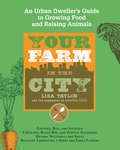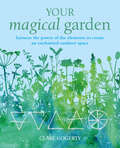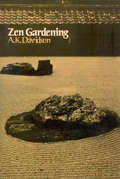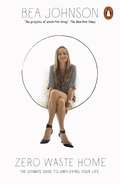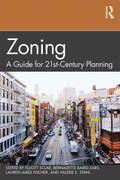- Table View
- List View
Your Farm in the City: An Urban Dweller's Guide to Growing Food and Raising Animals
by The Gardeners of Seattle Tilth Lisa TaylorThe most complete book on urban farming, covering everything from growing organic produce and raising chickens, to running a small farm on a city lot or in a suburban backyard.Eating locally and growing one's own food is a rapidly evolving movement in urban settings - Hantz Farms in Detroit has transformed 70 acres of abandoned properties into energy-efficient gardens, and Eagle Street Rooftop Farm, a 6,000-foot vegetable farm in Brooklyn, New York, yields 30 different kinds of produce, while private square-foot farms are cropping up in cities all over the country.Created by Lisa Taylor and the gardeners of Seattle Tilth, Your Farm in the City covers all of the essential information specific to gardening and farming in a city or town. Clear, easy-to-follow instructions guide and inspire even the most inexperienced urbanite in how to grow and harvest all types of produce, flowers, herbs, and trees, as well as how to raise livestock like chickens, ducks, rabbits, goats, and honeybees. Important information particular to gardening in a city or town is included, such as planning and maximizing limited space, building healthy soil, managing irrigation, understanding zoning laws, outwitting urban pests, and being a considerate farming neighbor. With 100 two-color instructional illustrations throughout and dozens of vital resources, Your Farm in the City is the most practical, comprehensive, and easy-to-follow guide to the burgeoning trend of urban farming.
Your Farm in the City: An Urban Dweller's Guide to Growing Food and Raising Animals
by The Gardeners of Seattle Tilth Lisa TaylorThe most complete book on urban farming, covering everything from growing organic produce and raising chickens, to running a small farm on a city lot or in a suburban backyard. Eating locally and growing one's own food is a rapidly evolving movement in urban settings - Hantz Farms in Detroit has transformed 70 acres of abandoned properties into energy-efficient gardens, and Eagle Street Rooftop Farm, a 6,000-foot vegetable farm in Brooklyn, New York, yields 30 different kinds of produce, while private square-foot farms are cropping up in cities all over the country. Created by Lisa Taylor and the gardeners of Seattle Tilth, Your Farm in the City covers all of the essential information specific to gardening and farming in a city or town. Clear, easy-to-follow instructions guide and inspire even the most inexperienced urbanite in how to grow and harvest all types of produce, flowers, herbs, and trees, as well as how to raise livestock like chickens, ducks, rabbits, goats, and honeybees. Important information particular to gardening in a city or town is included, such as planning and maximizing limited space, building healthy soil, managing irrigation, understanding zoning laws, outwitting urban pests, and being a considerate farming neighbor. With 100 two-color instructional illustrations throughout and dozens of vital resources, Your Farm in the City is the most practical, comprehensive, and easy-to-follow guide to the burgeoning trend of urban farming.
Your Magical Garden
by Clare GogertyDiscover how to awaken the magic of the elements in your outdoor space through thoughtful planting, careful planning of features and simple spells and rituals. Modern witchcraft is a nature-based discipline, harnessing the power of plants, the spirit of the land, the benefits of each season and the cycle of nature. Inspired by the Five Elements – Spirit, Air, Fire, Water and Earth – and based on author Clare Gogerty's own experience, Your Magical Garden will encourage you to look at your outdoor space with a witch’s eye. Each chapter is based on one of the Five Elements and offers details about the element and its potency, how to work with it in your garden, what plants are associated with it, and corresponding remedies, rituals and spells. You will learn how to create spiritual features, such as a moon gate, leaf mandala, scrying pool and fire pit, as well as ways to care for nature, such as rewilding to create a haven for plants and wildlife. Discover the wonder of re-enchanting your garden, however small, and creating a place of contemplation, meditation and connection with the earth.
Youth Planning Charrettes: A Manual for Planners, Teachers, and Youth Advocates
by Bruce RaceInvest in the future! Involve young people in planning. Learn how to design charrettes, starting with workshops and ending with lessons learned. This book explores various approaches to involving youth in schools, museums, and citizen groups. It's a complete guide to successful community charrettes for younger participants (K-8). First published in 1998. Routledge is an imprint of Taylor & Francis, an informa company.
Youth Planning Charrettes: A Manual for Planners, Teachers, and Youth Advocates
by Bruce RaceInvest in the future! Involve young people in planning. Learn how to design charrettes, starting with workshops and ending with lessons learned. This book explores various approaches to involving youth in schools, museums, and citizen groups. It's a complete guide to successful community charrettes for younger participants (K-8). First published in 1998. Routledge is an imprint of Taylor & Francis, an informa company.
Zen Gardening: Muso Soseki In His Gardens (Michigan Monograph Series In Japanese Studies #56)
by A. K. DavidsonThe Zen gardens of Japan are places in which to meditate. They can be anything from a landscaped garden, complete with waterfalls, to a bed of raked pebbles. This ancient way of gardening goes back to the Zen Buddhist priest-gardeners of the thirteenth century. Based on abstract compositions, relying on simplicity and suggestion, their gardens were designed to liberate the imagination, while providing a starting point in the appreciation of everyday things.Zen Gardening is the first handbook to examine the concepts and techniques that make up this garden art and to apply them to the West. It explains the historical relationship between Zen and the development of gardens, and gives practical suggestions for the creation of a Zen garden at home. The chapters on the garden components and their adaptation for the West, principles of design, and construction work, are illustrated with over 150 line drawings. Step by step they show us how to make the most of corners of large gardens, of plots not large enough for lawns and flower beds, or of awkward passageways, alleys and terraces.The principles of Zen gardening are particularly relevant in our crowded conurbations. Keir Davidson's thoughtful and practical approach enables us to maximize our garden space and to create areas of calm in our own immediate environment. Without precedent in the West, his book will be a source of delight to gardeners of every persuasion.
Zero Waste Home: The Ultimate Guide to Simplifying Your Life
by Bea JohnsonZero Waste Home is the ultimate guide to simplified, sustainable living from Bea Johnson, author of the popular blog zerowastehome.comLiving sustainably should not mean forfeiting either comfort or style. In this book Bea Johnson shows, by inspiring example, what green living looks like and offers a practical, step-by-step guide to diminishing our environmental footprints and improving our lives.It all comes down to the 5 Rs: Refuse, Reduce, Reuse, Recycle, Rot (and only in that order!). Zero Waste Home shows how these key principles can be applied to every area of your house from the kitchen to the kids' room, and it's packed with easy tips for all of us: from refusing freebies to using your plants as air fresheners.More than a manual, this is the inspiring story of how Bea Johnson transformed her family's health, finances, and relationships for the better by reducing their waste to an astonishing one litre per year.Could you do the same?
Zoning: A Guide for 21st-Century Planning
by Elliott Sclar Bernadette Baird-Zars Lauren Ames Fisher Valerie StahlZoning is at once a key technical competency of urban planning practice and a highly politicized regulatory tool. How this contradiction between the technical and political is resolved has wide-reaching implications for urban equity and sustainability, two key concerns of urban planning. Moving beyond critiques of zoning as a regulatory hindrance to local affordability or merely the rulebook that guides urban land use, this textbook takes an institutional approach to zoning, positioning its practice within the larger political, social and economic conflicts that shape local access for diverse groups across urban space. Foregrounding the historical-institutional setting in which zoning is embedded allows planners to more deeply engage with the equity and sustainability issues related to zoning practice. By approaching zoning from a social science and planning perspective, this text engages students of urban planning, policy and design with several key questions relevant to the realities of zoning and land regulation they encounter in practice. Why has the practice of zoning evolved as it has? How do social and economic institutions shape zoning in contemporary practice? How does zoning relate to the other competencies of planning, such as housing and transport? Where and why has zoning, an act of physical land use regulation, replaced social planning? These questions, grounded in examples and cases, will prompt readers to think critically about the potential and limitations of zoning. By re-forging the important links between zoning practice and the concerns of the urban planning profession, this text provides a new framework for considering zoning in the 21st century and beyond.
Zoning: A Guide for 21st-Century Planning
by Elliott Sclar Bernadette Baird-Zars Lauren Ames Fisher Valerie StahlZoning is at once a key technical competency of urban planning practice and a highly politicized regulatory tool. How this contradiction between the technical and political is resolved has wide-reaching implications for urban equity and sustainability, two key concerns of urban planning. Moving beyond critiques of zoning as a regulatory hindrance to local affordability or merely the rulebook that guides urban land use, this textbook takes an institutional approach to zoning, positioning its practice within the larger political, social and economic conflicts that shape local access for diverse groups across urban space. Foregrounding the historical-institutional setting in which zoning is embedded allows planners to more deeply engage with the equity and sustainability issues related to zoning practice. By approaching zoning from a social science and planning perspective, this text engages students of urban planning, policy and design with several key questions relevant to the realities of zoning and land regulation they encounter in practice. Why has the practice of zoning evolved as it has? How do social and economic institutions shape zoning in contemporary practice? How does zoning relate to the other competencies of planning, such as housing and transport? Where and why has zoning, an act of physical land use regulation, replaced social planning? These questions, grounded in examples and cases, will prompt readers to think critically about the potential and limitations of zoning. By re-forging the important links between zoning practice and the concerns of the urban planning profession, this text provides a new framework for considering zoning in the 21st century and beyond.
